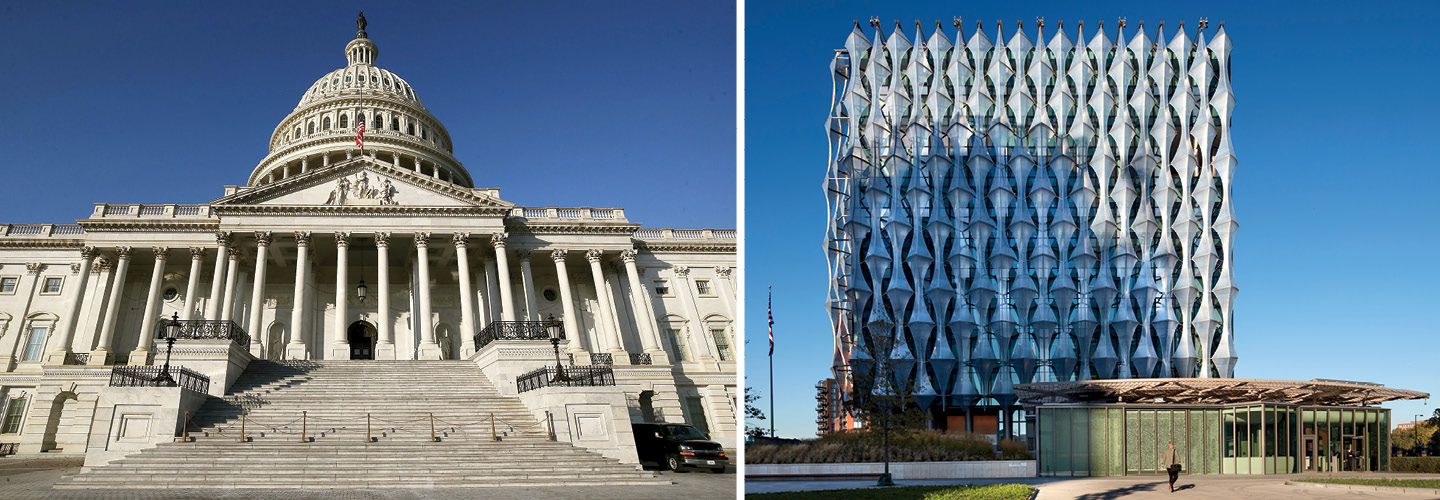The United States federal government owns more than 100,000 buildings across the country—and even around the world. These include offices, hospitals, courthouses, and embassies. Some like the U.S. Capitol, above left, are designed in the classical style, which draws inspiration from Greek and Roman architecture. Other federal buildings feature modern designs. The U.S. embassy in London, above right, which opened in 2018, evokes openness and light.
Rules that have been in place since 1962 state that federal building design should be a collaboration between architects, the government, and artists. These rules warn against having an official style for federal buildings. But some people want to change these measures. In February 2020, a draft of a new executive order about federal buildings came to light. The order would require a single national style for architecture, stating a preference for classical. It argues that the Founding Fathers chose the classical style for the nation’s early buildings. The order would also create a new committee to set future design policies. This committee would not include architects, engineers, artists, or builders.
The American Institute of Architects disagrees with the proposed executive order. The organization opposes a uniform style mandate. It argues that architecture should be designed for the community it serves, reflect the nation’s diversity, honor the past and the future, and embody freedom of thought. Others point out that during the country’s early days, the classical style was chosen because it was the contemporary style of the time.
What do you think: Should all federal buildings be designed in the classical style?

